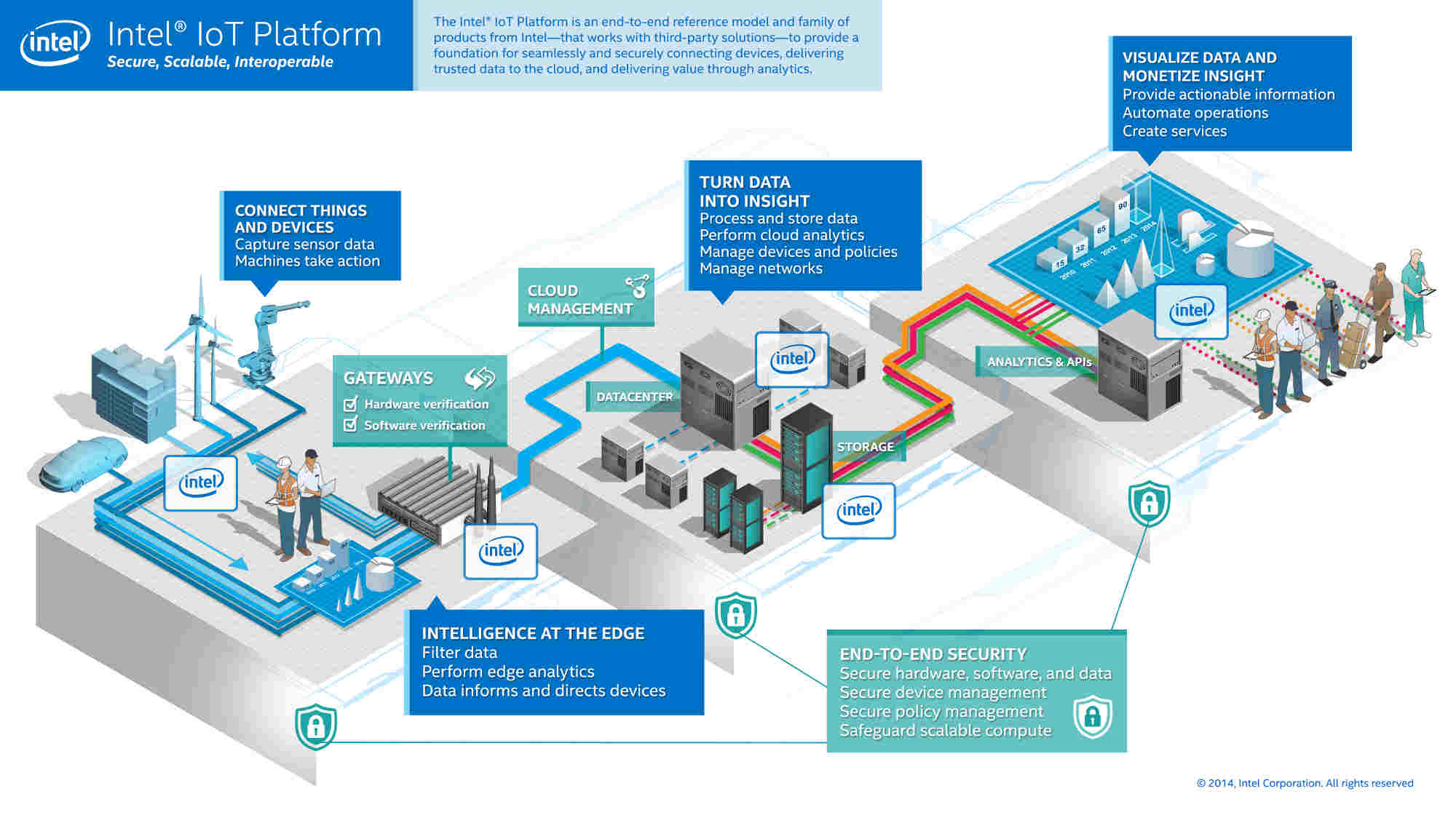| Intel Announces IoT Platform |
| Written by Harry Fairhead |
| Monday, 15 December 2014 |
|
Intel is competing with most other big companies for a slice of the Internet of Things (IoT) but it has the advantage of covering both ends of the problem - the Internet and the Things. In a short time the world will be full of Things as in the Internet of Things. All of these devices are going to be collecting data and requiring information. The question is how are so many devices going to be organized so that they work securly and deliver up their data in a way that can be useful. Most big companies think that the answer is in the cloud and Intel is no different in this respect - but Intel has hardware that works at all levels within the system. Take a look at this infographic:
Intel has the Things part of the deal covered with the Galileo and the Edison - two of the most interesting one-board computers available. The Edison in particular has the potential to take over the world from the Arduino simply because it is small, low cost and provides WiFi/Bluetooth connection out to the box. Next in the hierarchy is the hardware to connect the things to the cloud - gateways. The idea here is that you need more than a simple router to get IoT data to the cloud. Intel's "intelligent" gateways collect data, filter it, normalize it and then send it on to the cloud - securely. The security and much of the management comes from software developed by Intel-owned Wind River. The cloud part of the system is what Intel has just announced, but technical details are still very sketchy. The backend system is going to be provided by a deal with Cloudera, but that's about it as far as the information about how you build a system goes.
In many ways companies rolling out cloud based IoT systems are solving a problem that we don't have just yet - and perhaps may never have. It is assumed that the millions of Things are going to need some sort of organized support, and this is what the cloud systems are supposed to provide. When the smart city, complete with lots of instrumented lighting, air con and so on, becomes a reality it may be that rather than pooling data in a public cloud the designers will opt to keep data and control local. The current problem for the Internet of Things is still focused at the "Thing" level. Ideally what everyone is looking for is a small cheap powerful processor with lots of ready connectivity and the ability to run on batteries or solar. So far Intel's Edison seems to be a good first attempt at getting the Thing part of the equation right. Much of the problem is that Intel isn't good at getting a simple clear technical message across to the users who could make it all happen. There are too many marketing messages and slogans to work your way through before you hit anything like reality. Intel has a good foundation on which to built the IoT. Now we have to see if the rest of the structure fits.
More InformationIoT Insights 2014: Weaving the Connective Tissue for the Internet of Things Related ArticlesIntel's New Edison Is As Small As A Postage Stamp Intel Inside - The Arduino Galileo
To be informed about new articles on I Programmer, install the I Programmer Toolbar, subscribe to the RSS feed, follow us on, Twitter, Facebook, Google+ or Linkedin, or sign up for our weekly newsletter.
Comments
or email your comment to: comments@i-programmer.info |
| Last Updated ( Monday, 15 December 2014 ) |




